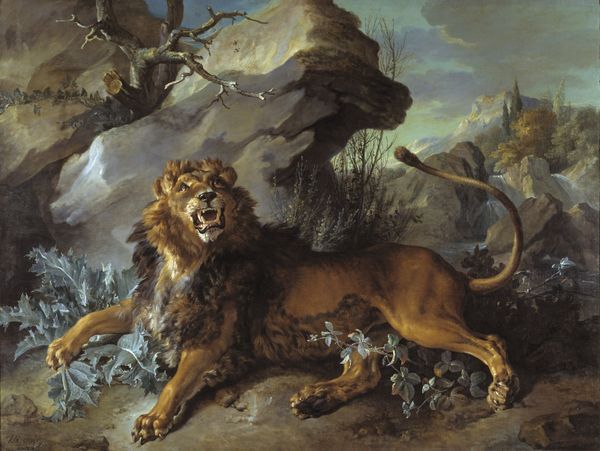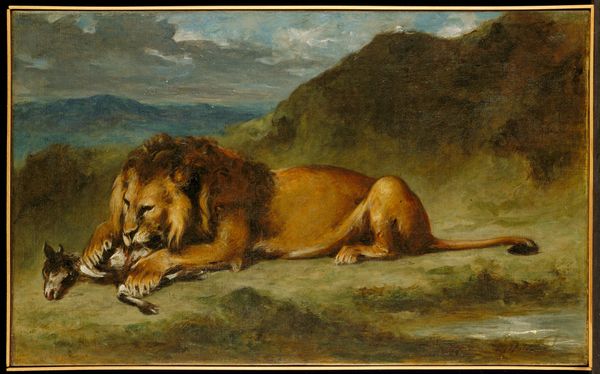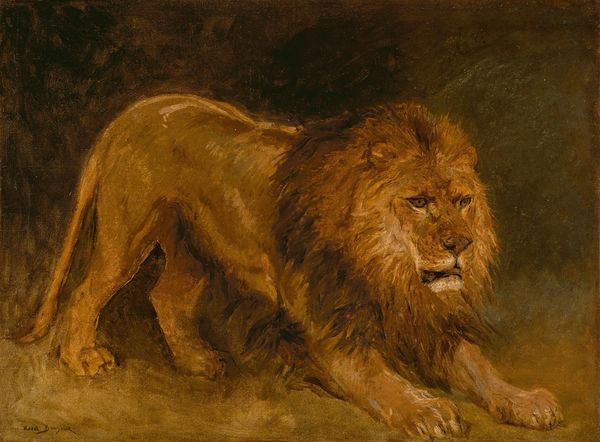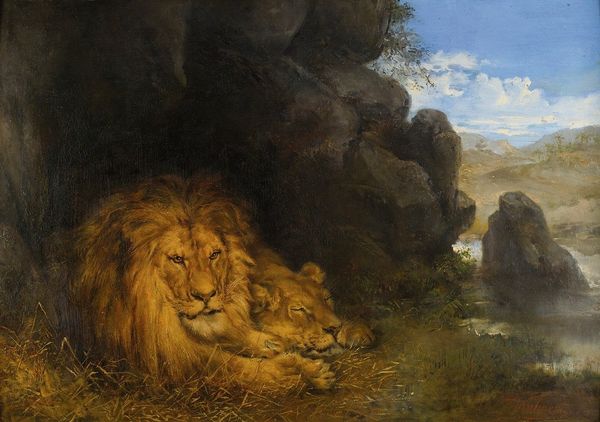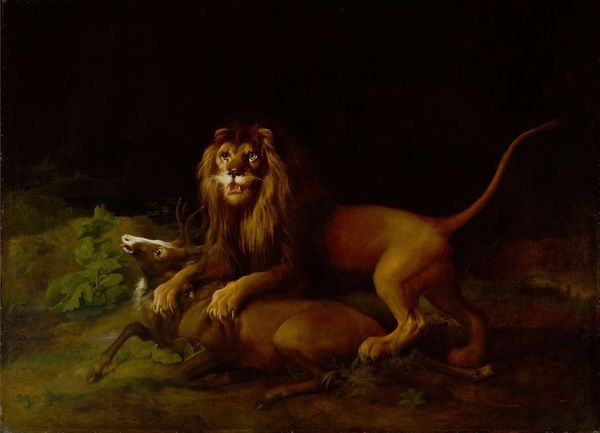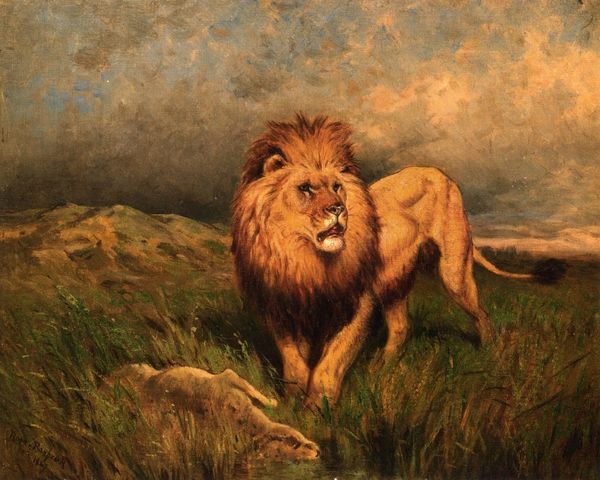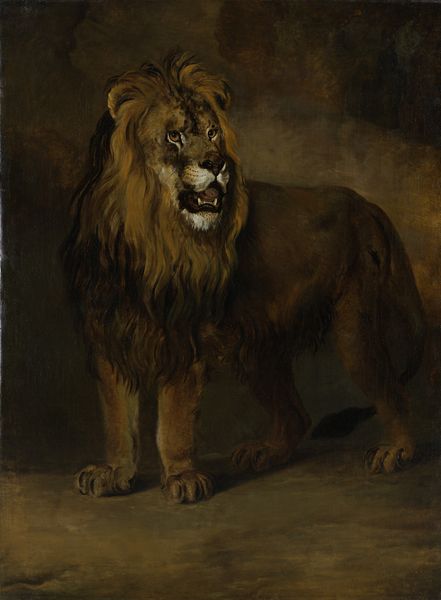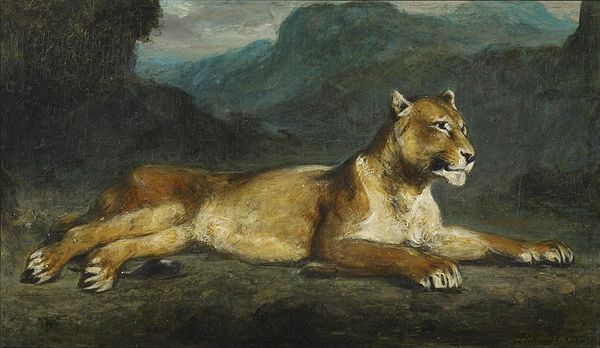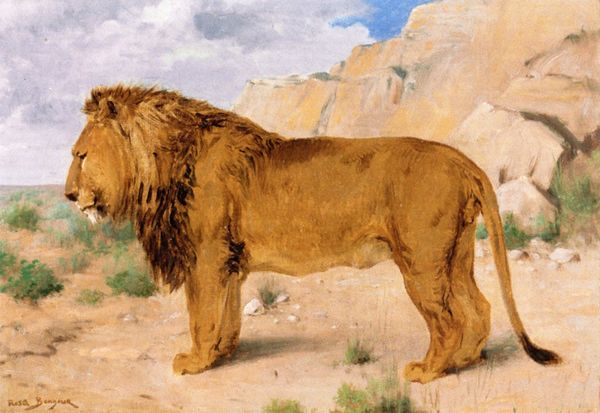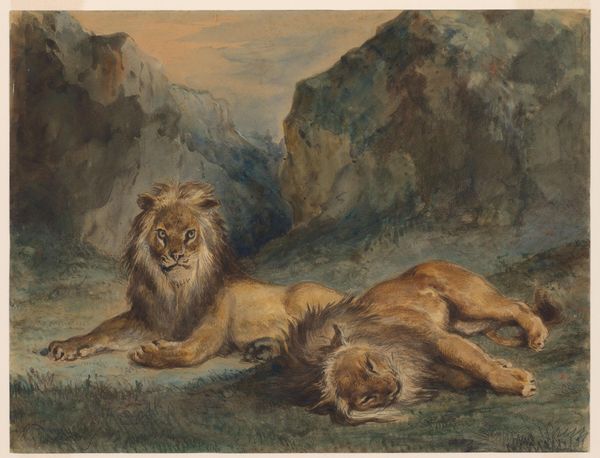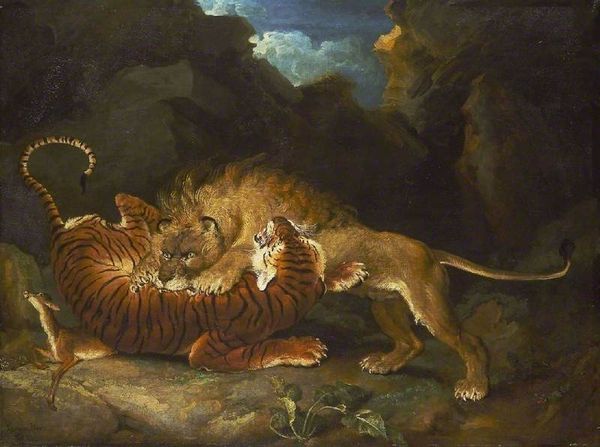
painting, oil-paint
#
portrait
#
animal
#
painting
#
oil-paint
#
landscape
#
oil painting
#
animal portrait
#
painting painterly
#
genre-painting
#
watercolor
#
rococo
Dimensions: 307 x 258 cm
Copyright: Public domain
Curator: Look at that gaze! There's something quite regal about it. Editor: It’s definitely… domesticating the wild, wouldn’t you say? Makes me think of power structures. Curator: Indeed! This is Jean-Baptiste Oudry’s "Lion," painted in 1752. It’s an oil painting currently residing in the Staatliches Museum Schwerin, Germany. Editor: I am struck by how deliberately the landscape informs our reading of the animal. See how the open, light area recedes toward the background and subtly highlights the heaviness, almost the manufactured weight, of the lion in the foreground? Curator: Interesting observation. What does that heaviness suggest to you? For me, it is the quality of the oil paints themselves. Notice how Oudry captures the fur with such meticulous detail; you can practically feel its texture. This detailed naturalism was prized at the time. Editor: I think it hints at the tension between nature and control. The Rococo period adored depicting animals, especially exotic ones, as a means to represent the reach of empire, dominance, and luxury of having wildness as a status symbol. Who gets to own and display power, then and now? Curator: That's a strong reading. But don't overlook the artist's technical skill. The subtle blending of colors in the mane, the delicate brushwork used to define the muscles beneath the skin—all speak to a mastery of the craft, I believe it's not just symbolic, the painting is, after all, extremely life-like! Editor: Absolutely, but craftsmanship doesn't exist in a vacuum. Who was commissioning such works, what did they signify, and how did the production and circulation of these images play into broader societal narratives of colonial power and species exploitation? I wonder how audiences would have interacted with such an imposing creature at the time? Curator: Certainly a far cry from the world many inhabitants of France knew then! Editor: Exactly. The very existence of the painting raises difficult questions about representation, power, and the enduring legacy of colonialism in art. Curator: I agree there are significant factors to reflect on! The painting technique is just exceptional though! Editor: Without doubt! However, looking beyond the oil, leads us to observe at the core of this powerful figure and see how that helps question today´s relations to gender and power.
Comments
No comments
Be the first to comment and join the conversation on the ultimate creative platform.
